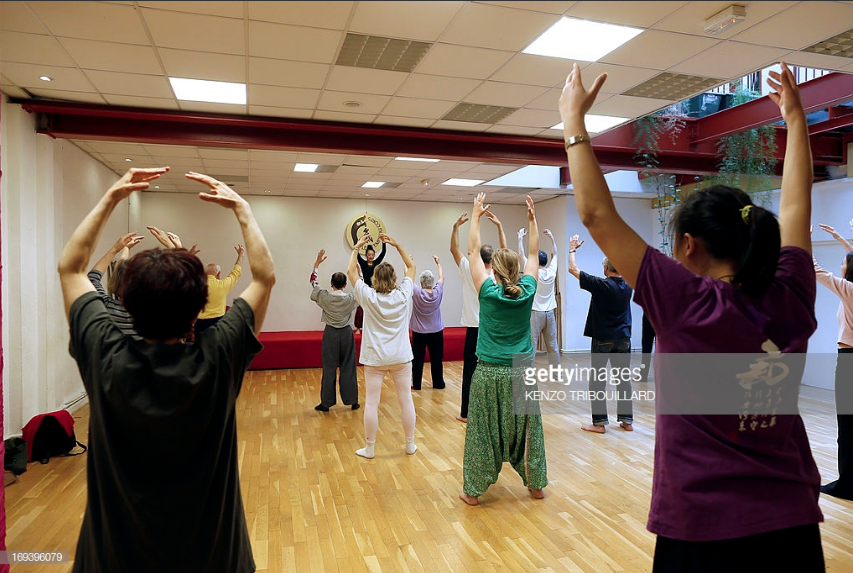What in the heck is Qigong?

I live in a small, rural community and am proud to say we have a vibrant, broad spectrum of people who regularly practice Qigong and Tai Chi. Both have been around for thousands of years and are widely known for their health-promoting benefits.
Qigong (pronounced “chee gung”) is approximately 5000 years old and is the origin of all eastern practices and martial art forms including Tai Chi. Observing stagnant water, a Buddhist monk realized that the vital fluids of the human body might suffer in the same way if they did not get replenished from a fresh, revitalizing flow, like that of a living stream. He went on to develop a series of movements combined with the ancient practice of mindfulness meditation.
With Qigong, simple, flowing movements and breath work in concert with our body’s innate system of homeostasis to optimize every system of the body. The various stances, combined with intentional breathing, help move oxygen, blood, lymph and vital qi energy throughout the body. Moving alone is enough to facilitate this, however, when combined with mind intent, breath and awareness, it can generate subtle yet profound improvements in overall health.

The human body is a complex “machine” in which each system influences another. If we experience too much (i.e. stress) or too little (i.e. movement) of something, it throws our whole system off balance. Consider the effects of stress on our nervous system, cardiovascular system, and even digestive system. When the body is in a constant state of dis-regulation, we not only feel “off,” we increase our risk of developing chronic disease, autoimmune disorders, depression and anxiety.
Qigong’s synchronized patterns of breath and movement have been shown to restore this balance and even optimize health and well-being. Regular, deep, intentional breathing optimizes oxygen delivery and helps mitigate the toxic effects of stress on the cardiovascular system. Increased blood flow through movement and breath replenish vital nutrients to the joints and organs, including the brain. The lymphatic system is tied to our immune function. Many people are not aware that lymph fluid does not move unless the tissue around it moves. In other words, it is stagnant. Lymph nodes are located throughout the body and are concentrated in areas around the neck, underarm and groin. Movement that involves these areas of the body is particularly beneficial to improving our immune function.
This brings us to qi (or “chi”) energy which travels through twelve meridian “channels” identified by studies involving acupuncture. We, and everything else in our universe, are made of atoms, which have energetic properties. We can sense “low energy” and “high energy” around certain situations and people and we certainly sense energy when it flows through our body after an electric shock! (Insert childhood memory here.) Just as with all other systems of our being, energy levels can be influenced by movement, breath and mind intent. One other influence which has not been discussed here is nutrition. The energy and nutrients contained in food also play a significant role in how all systems of the body function.
For a good “East meets West” exploration of Qigong, I recommend reading the book The Way of Qigong by Kenneth S. Cohen. For more information about how a regular Qigong practice impacts health, this review conducted by the National Institutes of Health (nih) provides a comprehensive overview of the proven health benefits of both Qigong and Tai Chi.
Michelle Jenck, M.Ed., Wholly Healthy LLC info@whollyhealthyllc.com
Below is a beginners video. It’s only 4 minutes long, but gives you a good sense of how this is done. *Note: There are two ads that pop up, one right after the other in the beginning. Just hold your cursor over the ad and click on the X in the top right hand corner of the ads to make them disappear…then enjoy!

Glad to see you covering options for stress reduction.